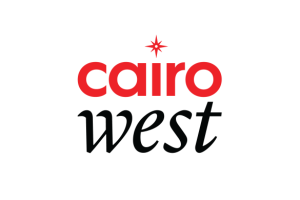Morning Coffee with Mrs. Stephanie Liassides
Morning Coffee with Mrs. Stephanie Liassides
By Hilary Diack
Tucked away in a quiet enclave just off the Cairo Alexandria Desert Road, the residence of H.E. Sotos Liassides and his charming wife Stephanie offers a serene and relaxing respite from the hustle and bustle of the city. Cairo East Magazine spent a very pleasant hour there with Mrs. Liassides, learning about her life in Cairo, her travels and sojourns in many diverse locales, and her favorite pastimes.
CEM: How do you enjoy life in Cairo?
SL: Actually, this is not my first stay here, I completed my master’s degree in Public Administration at the American University in Cairo back in the 1980’s, so although a lot of things have changed, many places are still very familiar. We have been here in this posting since 2011 and expect to be here for another year. Cairo resonates strongly with my love of Mediterranean culture and atmosphere, so I feel quite at home.
What is your favourite place in the city?
That would have to be Khan El Khalili, it is so full of atmosphere and amazing finds. It brings me back to the past, it has so much history. It is even mentioned in some Greek songs, which shows how famous it has become.
Where is your favourite destination in Egypt?
Alexandria. As I love history and the roots of cultures I adore exploring both the city and the wonderful Bibliotheca Alexandrina. It was also the birthplace of my favourite Greek poet, Constantine Cavafy, his home is still there. I love being near the sea, and I sometimes think when I am on the Alexandrian coast that I could almost reach across and touch Cyprus.
Does anything in Egypt remind you of Cyprus?
A lot. The food, the weather, the warmth and hospitality of the people. Mediterranean people have so much in common.
What other postings have you enjoyed?
Really, all of them. Every country offers something different and gives you new experiences. We had our first posting in Damascus in Syria, then went on to Thessaloniki in Greece, both Bonn and Berlin in Germany, Australia and New Zealand, Dublin in Ireland, and now Cairo. Amongst the many paintings by Cypriot artists we have in our residence you will find a piece of Aboriginal artwork we purchased during our stay in Australia.
How would you describe your typical daily schedule?
Of course, I always take my husband’s schedule into account; we have official engagements and host dinners regularly. As I enjoy cooking I love planning menus and often join in the preparation of the dishes as well. I look for ways to incorporate our Cypriot cuisine as an introduction to our country.
Getting more personal, what is your favourite mode of dress?
Honestly, I love jeans. When I was raising my three children life was so hectic that they were the most practical, comfortable article of clothing I could find. For everyday wear now I prefer a simple, classic look, and enjoy European quality and style.
Quick Questions:
Your favourite perfume?
I like Gucci Eau de Parfum 11. It is fresh and summery.
Favorite type of music?
Light classical and opera, I enjoy Andrea Boccelli when I need to relax, as well as Greek pop music.
What was the last film you saw?
I haven’t been to the cinema for ages, but it would definitely have been a comedy. It is my genre of choice, a good way of escaping our daily pressures.
Your favourite technological application?
WhatsApp, It is so practical, and a great low-cost way of keeping track of friends and family.
Your pet peeve?
I don’t think I have one. By nature I am an easy-going and tolerant person. But I do insist that the family eat together at lunchtimes, and will not tolerate unpunctuality.
Best piece of advice you have received?
It was given by the wife of another diplomat. She told me to always be there for my family and place them first, to be the anchor that would keep them grounded and together in spite of the many moves and changes of country we would need to make. This comes naturally to me as our culture is very family oriented, extending to encompass even distant relatives.
What can’t you live without?
Coffee, coffee and more coffee! Nescafé first thing in the morning, then on to American coffee and Greek coffee during the course of the day.
Happiness is….?
To enjoy the simple things in life. This is my slogan and my philosophy.
Your best habit?
That is a difficult question. I like to be well-informed, so I read a lot, although it often seems to be the latest home decorating and cookery magazines, (she says laughing).
And your worst habit?
I have a sweet tooth, and always bake a lot of cakes. It makes it impossible for my family to diet.
Do you have any time for hobbies?
Now that my children are older I enjoy having time for reading, playing bridge and handicrafts as well as baking and cooking. I must admit that I am not particularly sporty!
























